Before you can spend an afternoon ripping through the trails or zipping around your compound, you need a way to transport your ATV. For most four-wheeler enthusiasts, it’s a quick trip from the ground into the bed of their pickup. The question is, are you practicing safe loading? Propping up a makeshift plywood ramp isn’t the answer; neither is popping a wheelie and goosing it into the truck bed. Bad idea.
It’s extremely important you make safety a priority when loading your ATV into a pickup (and unloading it later). Following the proper safety steps will ensure you avoid damaging both your truck and your ATV—not to mention keeping you safe. Pull up a couple of ATV loading fail videos on YouTube to see exactly what can happen when safety is an afterthought.
The most important piece of equipment you’ll need for safe loading and unloading is an ATV ramp. You’ll find many different kinds of ramps on the market—whatever you use should be sturdy, capable of withstanding the weight of your four-wheeler and made to the proper dimensions for the vehicle and the tires. We have a sizable selection of ATV ramps that will make it easier for you to safely load and unload your quad.
Having a high-quality ATV ramp is only the beginning. The actual loading process is something every ATV owner needs to get familiar with and make sure they understand completely before attempting. Here’s an overview of the must-follow steps for safe loading and unloading of your quad into and out of a pickup truck.
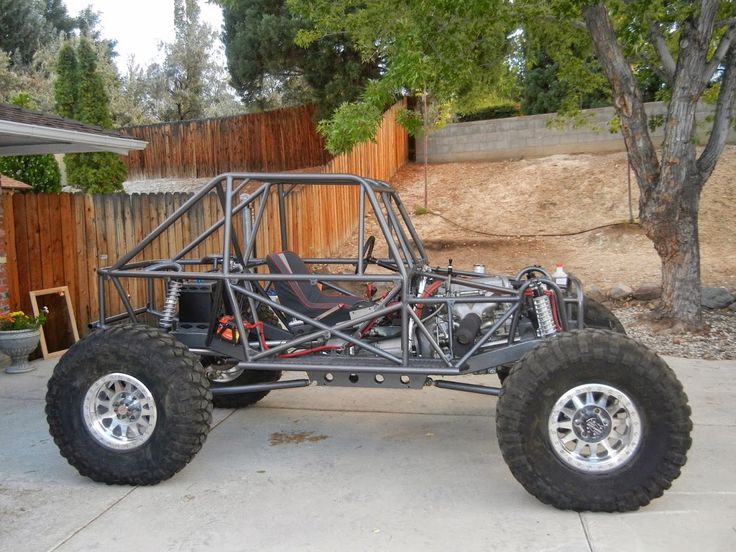
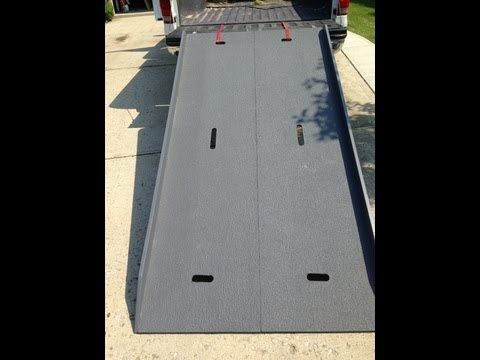 Remove the key from the quad and keep it somewhere safe during transportation.
Remove the key from the quad and keep it somewhere safe during transportation.
When unloading your ATV, simply follow this process in reverse. Again, it’s important you take it slow while backing your four-wheeler down the ramp in reverse—too fast and you may lose control of the quad. It doesn’t take much for a top-heavy ATV to flip up and over due to a misaligned ramp or an abrupt stop midway down the ramp.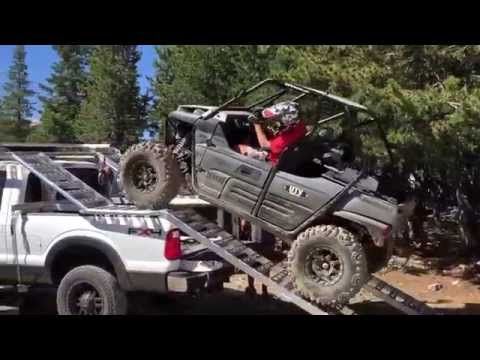 Ride the brakes if needed, and always wear a high-quality helmet. It can help to have a spotter on hand to give you directions, especially when unloading.
Ride the brakes if needed, and always wear a high-quality helmet. It can help to have a spotter on hand to give you directions, especially when unloading.
Follow these instructions and you’ll have no problem getting your four-wheeler into your truck and ready for transport to your favorite trail or campsite!
Need to transport two quads from point A to point B? Whether you’re going out for a ride or you’re taking your ATVs to your trusted mechanic, there’s a right way to load these vehicles into a truck if you don’t have access to or don’t want to deal with the hassle of a trailer. Hauling two ATVs at once is easy if you have a sufficiently sized pickup truck bed and Black Widow Pro’s ATV Carrier and Rack System. Here’s a brief overview of the process of loading two ATVs into a truck bed.
If you’re hauling two ATVs with your pickup and you don’t have a trailer, you need a sturdy ATV carrier and rack system.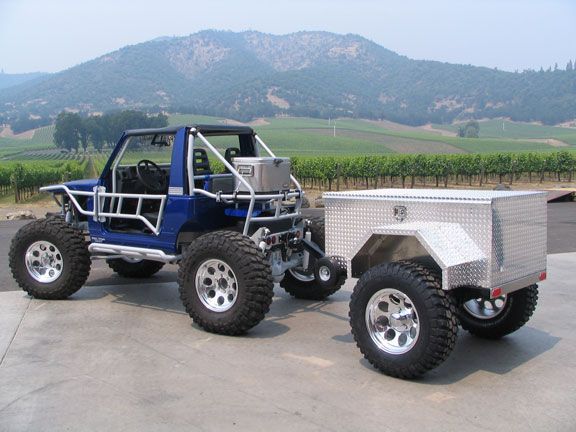 Once assembled, it mounts directly into your truck bed with one of three options:
Once assembled, it mounts directly into your truck bed with one of three options:
The included extra-long ramps hook right into the rack for maximum stability and safety while loading, and store directly beneath the carrier platform during transport or storage. A pin and clamp lock the ramps in their bracket to keep them secure.
Black Widow HAUL-ALL-R ATV Carrier installed in truck bedA built-in headache rack prevents any damage from occurring to your truck cab during loading, unloading and transport. Multiple tie-down points give you plenty of options for securing ATVs with the strap of your choice (we always recommend ratchet straps).
Once you’ve installed the carrier and rack system in your pickup truck bed, position your ATVs so that they are in line with the loading ramps. Ideally, get them in a position with the ramps so that they’re lined up with the center of each ATVs’ tires. Improper alignment creates a risk that the ramps may tip, or you may send the ATV off the side.
Loading up ATV onto Black Widow HAUL-ALL-R ATV Carrier installed in truck bedBecause of the larger loading height required with this system, driving up is the best option. We recommend having a spotter on hand, since it gives you a second set of eyes to ensure proper wheel alignment for loading. If you’ve taken the time to set up everything properly and position your ATVs appropriately, you can drive them right up the ramps without any jerky stop-start motions.
The most important safety tip: Protect your brain! Always wear a helmet.
As you start moving, apply the throttle firmly but smoothly, feeding the engine just enough gas for momentum.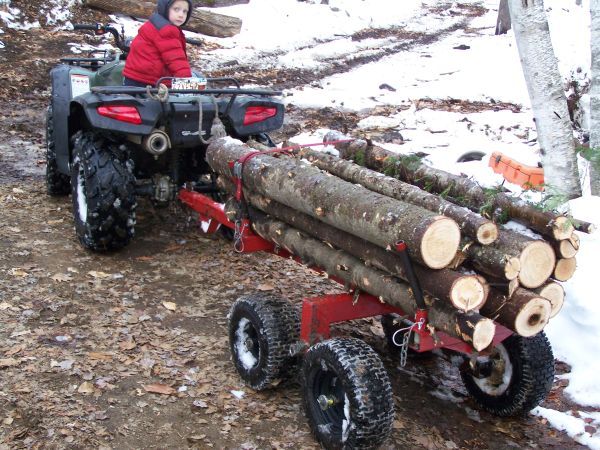 Make sure you don’t pull off the throttle as you’re driving up the ramps—you could slip backwards. Creep the ATV slowly until all four wheels rest safely on the carrier rack. Once the ATV is in place, put it in park or apply the parking brake.
Make sure you don’t pull off the throttle as you’re driving up the ramps—you could slip backwards. Creep the ATV slowly until all four wheels rest safely on the carrier rack. Once the ATV is in place, put it in park or apply the parking brake.
After you’ve loaded the first ATV on the rack system, secure it in place before loading the second quad. You’ll need a high-quality set of ratchet straps to ensure the quad doesn’t move during transport. Strap both the front and rear of the ATV, checking that there’s enough tension to keep the vehicle from bouncing around while you’re traveling. It often helps to have your spotter sit on the front and back of the vehicle as you secure the straps.
Before you finish up, grab the handlebars of your ATVs and do some pushing and pulling to make sure the vehicle isn’t wiggling. If you notice any movement, increase the tension or add another strap for more stability.
Transporting two ATVs in the bed of your pickup truck is easy with Black Widow Pro’s ATV Carrier and Rack System. With sturdy construction and simple installation, our system comes with everything you need to transport your quads safely and with maximum efficiency. If you have any questions about proper ATV transport, our experts are standing by to help.
K. Zakurdaev
It was created exclusively for sports and entertainment, but he still won the right to work! The favorite toy of wealthy idlers and resourceful businessmen - an ATV, aka ATV, aka ATV - was conceived two decades ago solely as a "cooler" analogue of a motocross motorcycle for dashing off-road rides. But over the years, this vehicle has found its place among commercial vehicles, gradually turning into almost a real truck!
It was bound to happen.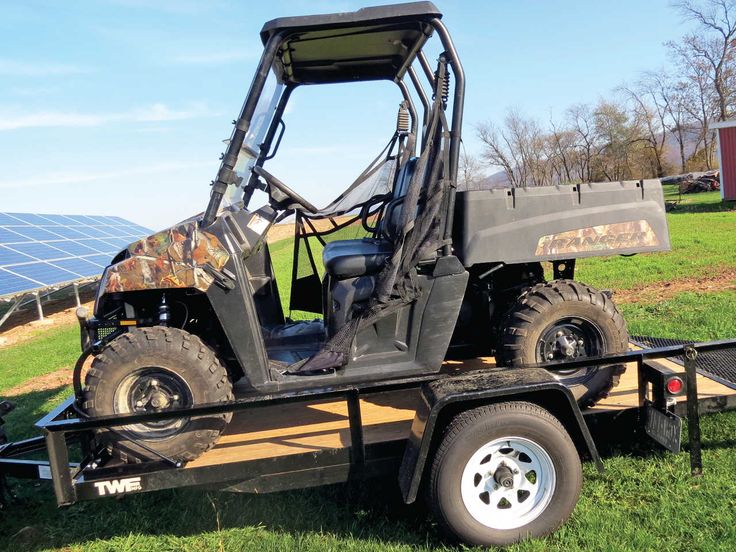 The process took almost twenty years, but the most useless wheeled vehicle in terms of transporting goods still found its place among commercial vehicles. Until recently, this seemed impossible, but today cargo versions of all-terrain vehicles are in the production program of the most famous manufacturers.
The process took almost twenty years, but the most useless wheeled vehicle in terms of transporting goods still found its place among commercial vehicles. Until recently, this seemed impossible, but today cargo versions of all-terrain vehicles are in the production program of the most famous manufacturers.
What is an ATV? By and large, this is a motorcycle put on four wheels, which has retained its typical fit and exceptional individuality of use, but has gained the ability to overcome the most difficult off-road conditions. The latter quality turned out to be so significant that it was emphasized in one of the names of the ATV - ATV, an abbreviation resulting from the reduction of the words “All Terrain Vehicle”, which literally translates into Russian as “all-terrain vehicle”. And this is one hundred percent true - hardly any other wheeled vehicle will be able to compete on equal terms with an ATV in cross-country ability!
Initially the ATV was conceived exclusively for entertainment The first ones are made as light as possible, with a drive only to the rear wheels (using a chain drive) without any luggage compartments, with two-stroke engines and a rigid suspension.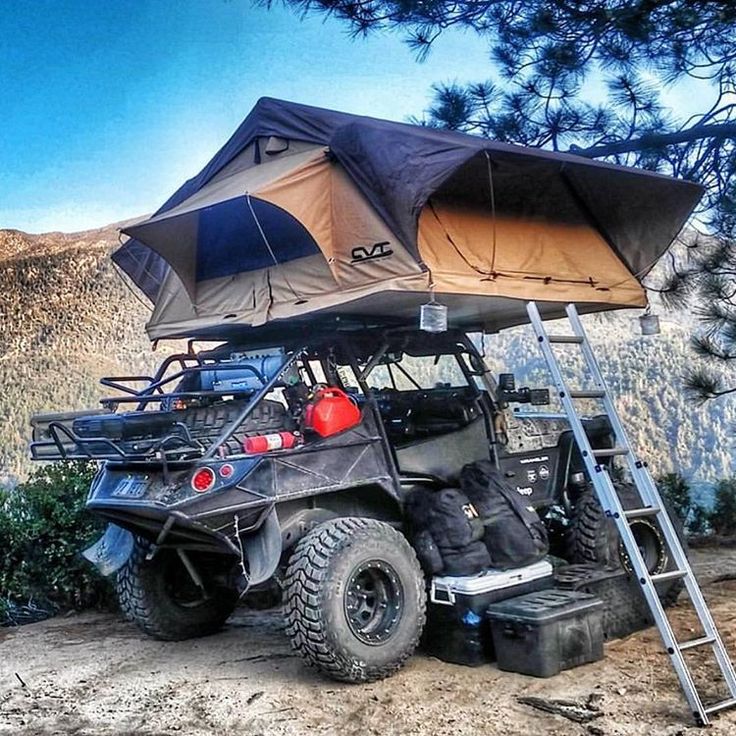 Utility, they are also tourist, models are more practical and comfortable, their design traditionally uses an all-wheel drive transmission, a fully independent suspension, more flexible four-stroke engines. Such ATVs have increased carrying capacity and cargo capacity (due to the use of rear and sometimes front trunks), due to the possibility of transporting a trailer. Needless to say, commercial versions of all-terrain vehicles appeared precisely on the basis of the latter. Utility, they are also tourist, models are more practical and comfortable, their design traditionally uses an all-wheel drive transmission, a fully independent suspension, more flexible four-stroke engines. Such ATVs have increased carrying capacity and cargo capacity (due to the use of rear and sometimes front trunks), due to the possibility of transporting a trailer. Needless to say, commercial versions of all-terrain vehicles appeared precisely on the basis of the latter. At first, the ATV harnessed to work did not differ much from the usual one: all kinds of luggage boxes were installed in the front and rear parts of its body, as well as special holders, with which it was possible to securely fix shovels, ladders and other tools. Since the ATV was not originally intended to carry any significant amount of cargo, special trailers were used, which dealers began to offer a great variety as accessories.
: the first - because of the small usable volume, the second - because of the inconvenience of using in difficult off-road conditions, so a cardinal solution to the issue of cargo capacity was required. Polaris was the first to cut the Gordian knot. Taking as a basis the heavy utilitarian-tourist model Sportsman, the designers mounted a cargo platform in its rear part. True, due to the short base of the vehicle, an additional axle had to be “rolled up” under it, as a result of which the car turned out to be six-wheeled. Such an ATV could already carry about 360 kg of cargo, which is about three times more than a conventional model is capable of transporting, and the cargo could be indivisible, it did not need to be pushed into different trunks and containers. But the price for the increased cargo capacity was increased weight and fuel consumption, worsened dynamics and maneuverability. In addition, the ATV, as it was, remained single-seat, which is not very good for any commercial transportation. In a word, new constructive solutions were required, at least partially removing these problems. And they were found.
So the ATV, adapted for the transport of goods, did not escape common features with it. How useful are ATV trucks? It depends. Of course, ordinary carriers do not need them. The operation of commercial versions of all-terrain vehicles is possible only in rather specific conditions where the use of traditional trucks, such as pickups, is impossible or unprofitable. Cargo versions of ATVs are bought thanks to the qualities inherited from the "ancestors". First, they have off-road capabilities that the vast majority of four-wheel-drive pickups or larger off-road trucks are not capable of.
especially manifested in difficult road conditions, in which it is more economically profitable to transport small loads on it. This is true for all kinds of maintenance or consumer service companies, and for individuals who purchase an ATV-truck for their personal use. You can even say that in today's life, cargo versions of all-terrain vehicles have come to the place of "jeeps" of the middle of the last century - the most simplified utilitarian off-road vehicles, designed to constantly be "on the hook": either to throw people to the right place, or a small load, and all this is out of reach. How much can an ATV carry on its shoulders? A little - from three hundred to five hundred kilograms, as the Polaris Ranger or Yamaha Rhino models already mentioned above. But practice shows that for the range of tasks in which cargo versions of ATVs are involved, this is quite enough. Plus, it is possible to tow a trailer of about the same mass. But it can be predicted that in the future the carrying capacity, and most importantly, the carrying capacity of all-terrain vehicles will grow. Confirming this trend is the recent introduction of the three-axle version of the Polaris Ranger with a payload capacity of almost 600 kg, as well as an extended version of the Yamaha Pro Hauler model, which is more like a full-fledged commercial truck, from which to light pickup is literally one step away! Please enable JavaScript to view the comments powered by Disqus. What must be done with an ATV in order not to disappear in the snow - Category "A"
An ATV, unlike a snowmobile, is an all-weather vehicle. But in order for the all-terrain vehicle to faithfully plow the virgin snow all winter, it must be prepared for operation in the cold season. Otherwise, by the end of winter, or even earlier, the quadric can easily “die”. The AvtoVzglyad portal tells about the nuances of the winter use of "quadrics". Maxim Stroker Most often, owners of ATVs face the problem of difficult starting in the cold. Perhaps the problem may be in poor contact between the power wires and the battery terminals. If there is oxidation in the connection, then the battery itself does not charge well and at the time of starting in the cold it simply does not have enough voltage to confidently turn the crankshaft with the starter. The problem is solved simply: disconnect the wires from the battery, remove oxides with sandpaper, and so that they do not form in the future, we process the battery terminals with a special Liqui Moly Kontaktreinig contact cleaner. We choose liquidBut much more often, engine oil becomes the cause of a difficult start-up in the cold. Most ATVs run on 10W-40 or 10W-50 lube during the summer. In general, such oil is considered to be quite all-weather, but if your “quad” is not in a heated garage, but on the street, then in severe frosts, difficulties arise with starting the engine, since the thickened oil provides excessive resistance. But even if the engine starts, the first seconds after starting it can run dry, as it will be very difficult for the oil pump to create the necessary pressure due to the thickened lubricant and supply it to the rubbing surfaces. This is especially dangerous for motors assembled on so-called plain bearings, because due to oil starvation, main or connecting rod bearings can turn. In order not to encounter such a problem, before the onset of severe cold, you should fill the ATV engine with oil with a viscosity of 5W-50. The Liqui Moly product line has a quality lubricant with the right characteristics, one hundred percent suitable for ATV operation in winter. Liqui Moly ATV 4T Motoroil 5W-50 HC-synthetic motor oil provides maximum performance and engine protection under all operating conditions. Anti-wear additive package and base stock provide maximum ATV engine protection and trouble-free operation over a wide range of temperatures and loads. The oil guarantees easy start-up at low temperatures and high viscosity-temperature stability. Remove the water immediately It is not a superfluous procedure before winter to change the oil in the ATV gearboxes. Despite the fact that there is no winter transmission for ATVs as such, it is still necessary to change the oil before frosts, because water from autumn puddles could well get into these nodes, through a breather or seals, which, mixed with oil, turns into an emulsion . If there is any chance that the gearboxes of your "rogue" have taken a sip of water, then in addition to filling in new oil, they still need to be washed. Drain the waste from the gearboxes, tighten the bottom plug, and pour the quick cleaner Liqui Moly Schnell-Reiniger through the filler. This agent is absolutely safe for electrics and rubber seals of the gearbox, but at the same time it will effectively clean the inside of the unit from the remnants of the emulsion. For best results, jack up the quad axle you are flushing and turn the wheels forward/back by hand to flush the remaining emulsion from the sidewalls as well. After that, unscrew the drain plug, get rid of the dirty contents and, screwing the plug back, pour in fresh gear oil. ATVs most often use a transmission with a viscosity of 75W90. This oil contains polyalphaolefins and special additives, due to which the lubricant does not change its properties either at sub-zero or positive temperatures. Its thermo-oxidative stability and resistance to aging allow for extended drain intervals that are significantly higher than other similar oils of similar viscosity. In any case, check the manufacturer's recommendations before filling gears with oil, as some ATV models require gear oil for clutch operation. By the way, Liqui Moly also has such oils in its product line. Injections of youth for the running gear For the running gear to work well, it also needs to be prepared for the winter. |